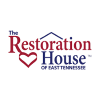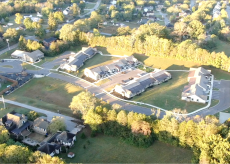
PPP Funds Allowed The Restoration House to Focus, Become More Innovative During Pandemic
 By Kailyn Lamb, Marketing Content Writer and Editor, PYA
By Kailyn Lamb, Marketing Content Writer and Editor, PYA
It was an unexpected answer to an icebreaker question that led Daniel Watson and his wife Mandy to start The Restoration House 14 years ago.
Watson said they were at a small group event when someone asked what they would do if they could do anything in life with no boundaries. While he joked his answer was as deep as learning a second language and how to fly a plane, Mandy’s answer was more powerful. She said she would adopt children, buy a large property, and start a ministry to come alongside single moms and their kids.
“Long story short, two months later we owned the first property to start The Restoration House and started quitting our jobs,” he said.
That was the start of The Restoration House, a nonprofit organization that works with mother-led families, helping them get back on their feet and find their potential. In 2005, Watson said he and Mandy began by doing research and talking to similar organizations to learn best practices so they could build a strong foundation for The Restoration House “right out of the gate.” The Restoration House was launched two years later.
Both Watson and his wife came from mother-led homes. While Mandy’s father and community around her were still in the picture to support her, Watson’s home life was not as structured.
“We kind of felt like we saw both sides of the single-mother coin,” he said.
Like so many in the past year, The Restoration House felt the financial crunch of the pandemic. Watson said annually about 25 percent of the nonprofit’s budget came from fundraising events that likely would not happen. That was when they turned to PYA to help them file for a Paycheck Protection Program (PPP) loan, Watson said. Because their organization is so relationship-based, Watson said they needed to keep all their staff on hand at The Restoration House.
“To have an organization like PYA that’s walking with us on the financial management side gives us a lot of comfort to be able to focus more of our direct energies into the work that we’re doing,” he said.

Besides taking the stress of financial worry, having the PPP funds also provided The Restoration House the space to “listen well and learn” during the crisis.
“It allowed us to focus more of our energy into really innovating and being creative about the work that we’re doing,” he said. “We would not have been able to spend the same amount of energy asking how we can be stronger at what we’re actually here to do.”
Watson said The Restoration House program has four main components. First is supportive transitional housing. The families live on the property for two to three years. Tenants pay rent based on their income.
Community is crucial to the program. The houses on the property were built to encourage connections between the families living at The Restoration House in the hopes they will support each other. Ally Teams, which are the second component of the nonprofit, also help to build on this “social capital,” Watson said. The teams add to the emotional and spiritual support for families.
The third component of The Restoration House is family advocacy. This is where the nonprofit works with the individual families to help them set goals, whether it’s for personal development, career development, or spiritual development. Around 75 percent of the moms go engage in post-secondary education. The Restoration House works with other partner organizations in the region, such as Harmony Family Center, Emerald Youth Foundation, and the YMCA, to help families reach these goals. This ties to the fourth component, which is youth development. Of the 80 people living at The Restoration House right now, 50 of them are kids, said Watson.
“The goal is by the time a family is graduating The Restoration House, they’re in a position to be able to afford market rent or homeownership,” he said. “For us, it’s not about telling them where they should be. It’s about helping them envision where they want to be, and then doing all we can to help them get there.”
When The Restoration House first started, Watson said they could help two families on the initial property. In 2012, The Restoration House was featured on the TV show “Extreme Makeover: Home Edition.” The show rebuilt the Watson’s family home, and also built a duplex so the couple could extend the The Restoration House program to serve more families.
Six months later, the nonprofit acquired six acres next door to the property. Last year, The Restoration House opened the newly developed property, which featured 24 new homes, a community center, playgrounds, a basketball court, and community garden.
Due to the growth of the nonprofit, Watson said they have been able to serve around 100 families since 2014. Around the same time as the TV show aired, giving them a “brief national stage,” The Restoration House added on consulting services to help other organizations working to support mother-led families. They have since helped 27 organizations in 10 states, Watson said.
“We’re glad we were able to [grow] over that period of time,” he said. “That allowed us to grow steadily. If we had 24 homes to start, we probably wouldn’t be here today.”
Like what you've read?
Forward to a friend!

